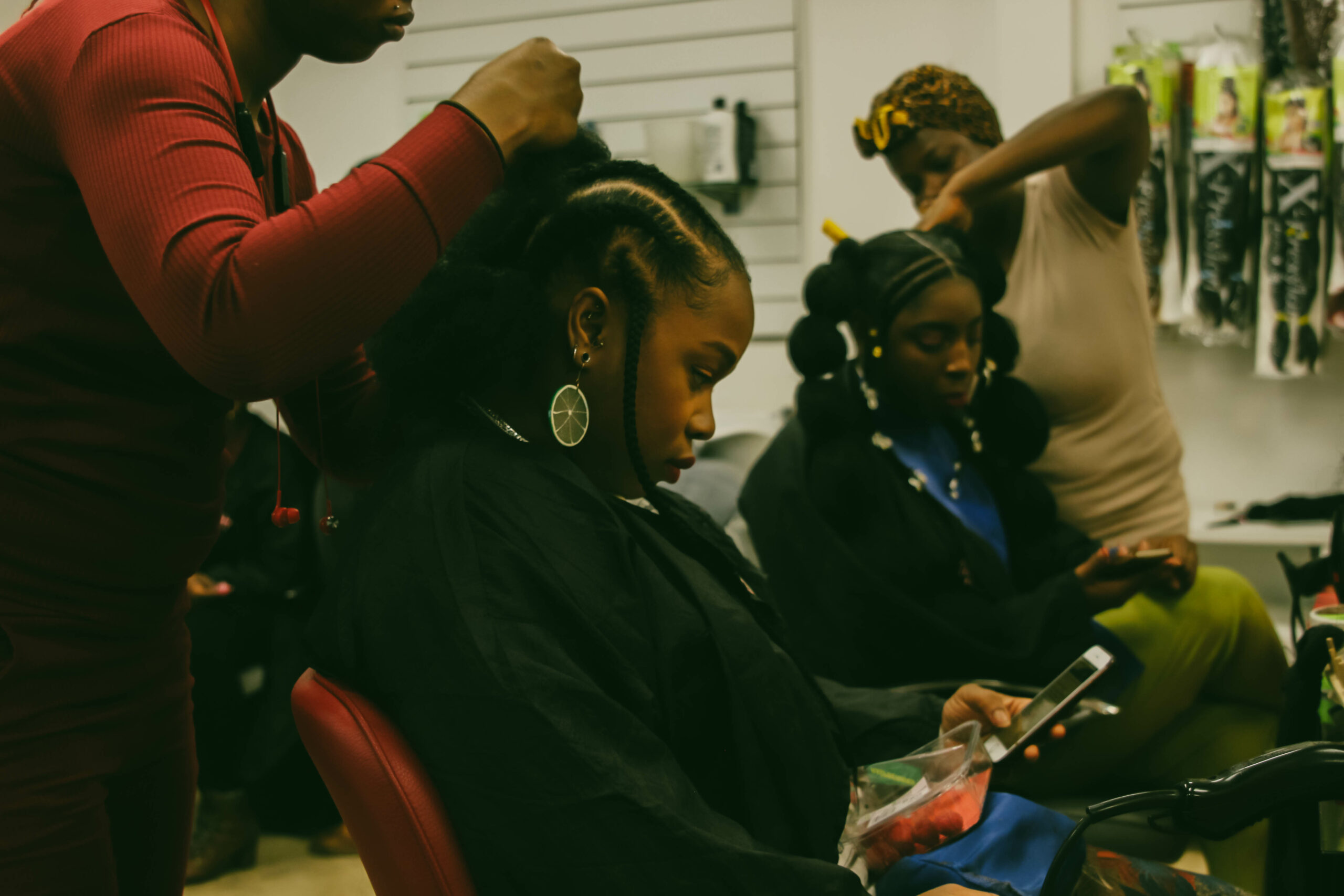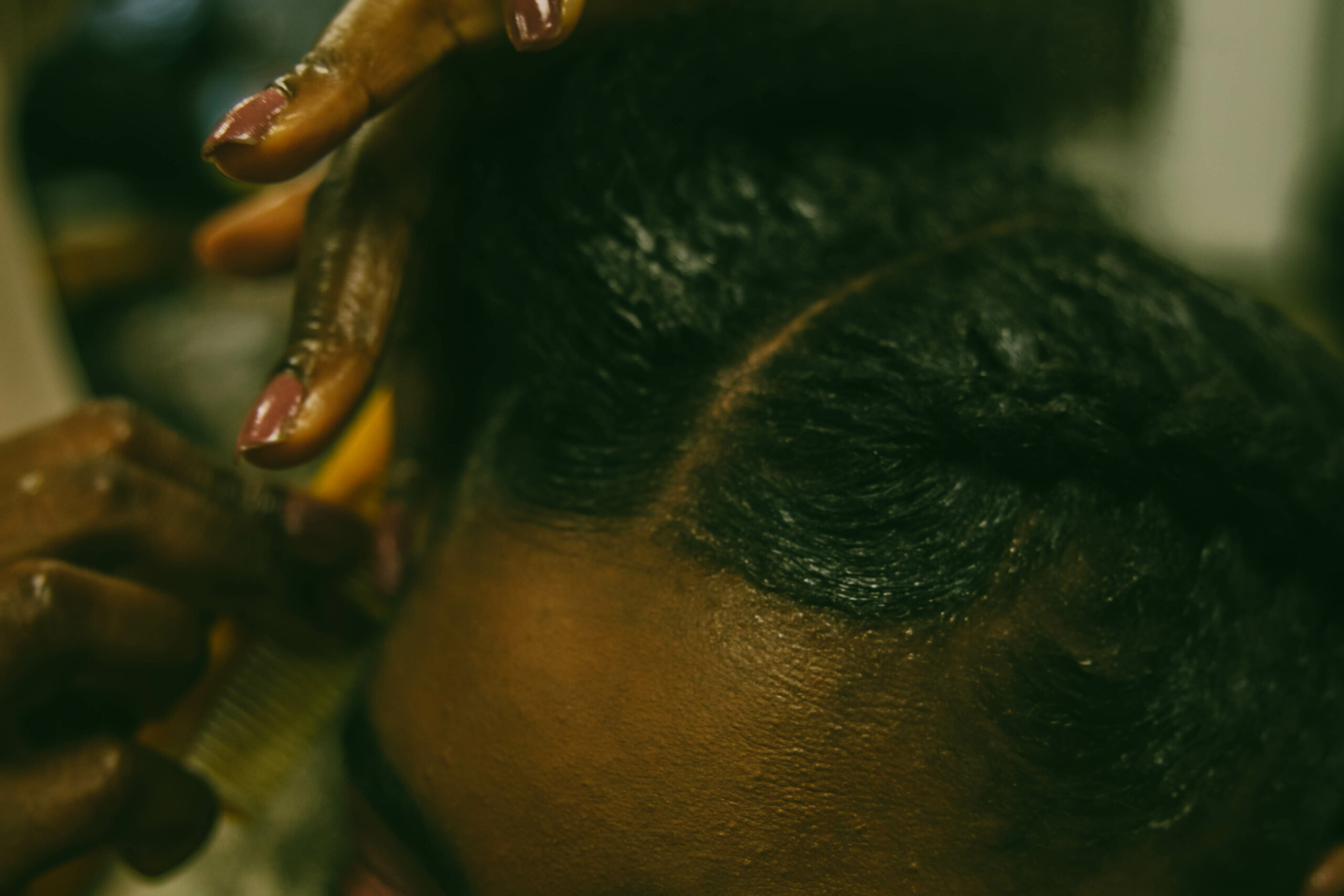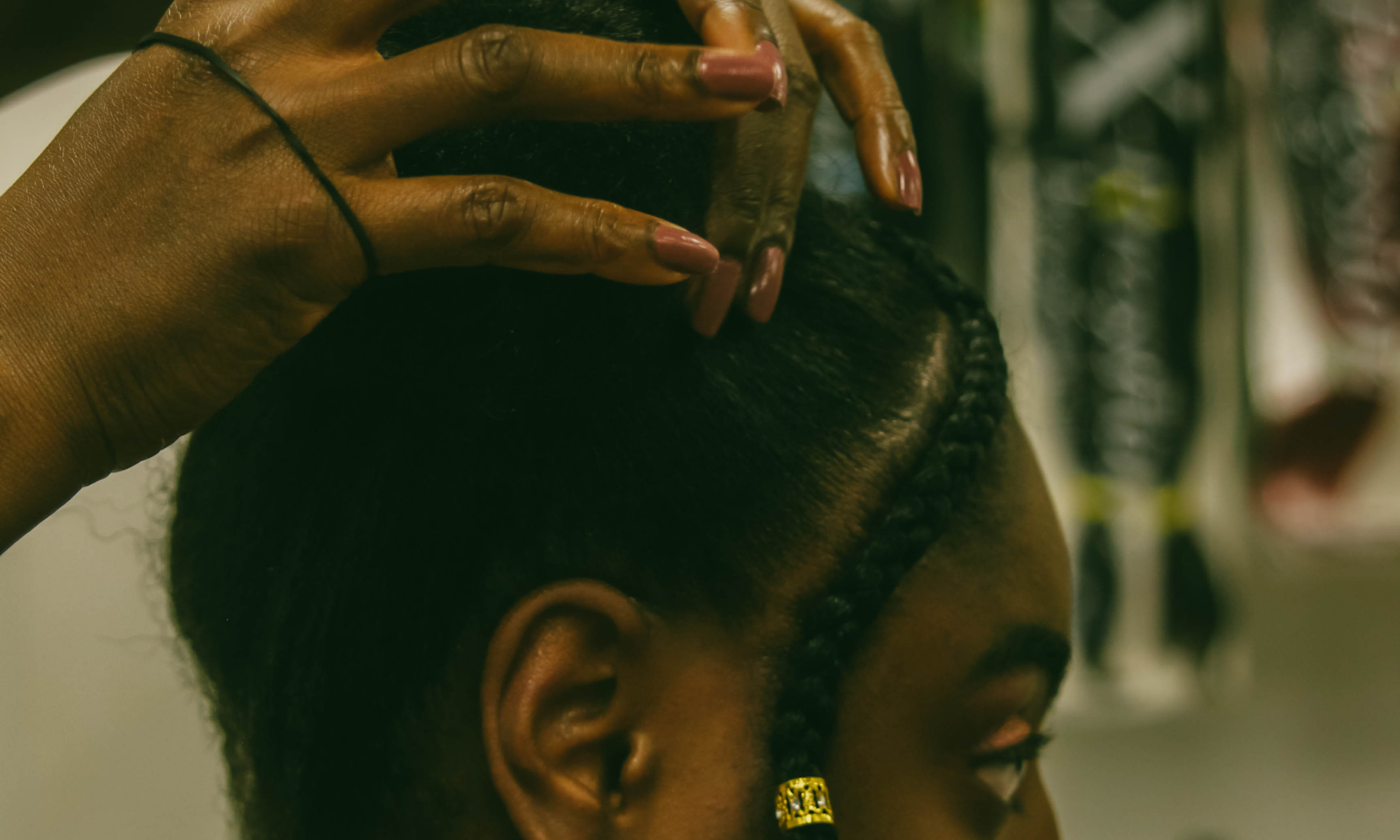
Photography by Yossy Akinsanya for gal-dem / Peckham Palms
Afro Answers: why detangling safely and healthy routines are more important than long hair goals
For this month's Afro Answers our resident trichologist explains the hair growth cycle and how to remove shed hair.
Ebuni Ajiduah
28 Mar 2021
With the end of lockdown on the horizon (or so we hope), it feels like there’s a bit of pressure to show the gains we’ve made during our time at home. Is your ‘summer body’ ready? Have you read all the books you bought? Have you finally managed to get to grips with your hair routine? So for this month’s Afro Answers, I dive into hair goals and things that might be more important than keeping those precious inches firmly attached to your scalp.
Long hair, should you care?
Hair goals seem tofall into two main categories: defined curls, which I’ve tackled, or length and lots of it. Length checks are the preferred method to measure the progress of your hair journey. Starting from a TWA (teeny weeny afro) all the way to the coveted waist length, you can even buy a shirt to show how you are doing. I’ve seen so many people contort themselves to move from ear length to shoulder length (Alexa, play Busta Rhymes ‘Break Ya Neck’) and some will avoid the hair salon and regular cuts altogether for the sake of a few strands of hair that are only slightly longer than the rest.
The obsession with length has my people in a vice grip! My inbox is full of messages asking “how can I do to make my hair grow faster/longer” and the simple answer in most cases is nothing, even though YouTube will have you thinking otherwise. Search for the inversion method and laugh with me (I promise it doesn’t work!).
It’s widely accepted that hair grows at an average rate of half an inch per month. Representative studies are hard to find, but most show that afro hair grows slightly slower. So in any year, you can expect around six inches of growth. If your hair is relaxed or coloured or even short it’s easy to see the growth, but after a certain point, it can be hard to tell.
Let me make this very clear – if your hair stopped growing, you would be bald very quickly! Locs are often seen as the exception and the only time afro hair can reach great lengths, but the truth is that it’s mostly a matter of length retention. Basically, because so many hairs are clumped together, the ends are less likely to break so length retention is greatly improved.
Hair growth cycles and how to stay at your optimum growth rate
Hair grows in a cycle: anagen – the growing phase, catagen, the resting phase and telogen – the shedding face, and the cycle keeps going round. Your hair growth speed and anagen length are largely genetically determined, but they can be influenced by environmental factors. Basically, your genes say what the optimum is and your health, lifestyle and hair choices can keep it there or take it down.
I always joke with my clients that your body needs very little excuse to let go of your hair. If the body is ill or under attack it quickly diverts resources from non-essential functions to keep you going. It’s really important to maintain a healthy diet, be stress-free, and understand that what’s going on inside you is way more important than what you put on the outside.
There are a few quick tips to keep you at the optimum growth rate. Have regular blood tests to check for deficiencies and supplement when needed (that Biotin is not doing what you think it is). Improve your diet and keep foods in the mouth and off your hair. And read the next section to work on length retention.
Shedding is totally normal
Is your wash day still a sporadic whole weekend affair with pre-poos, herbal concoctions and copious amounts of conditioner? Apart from how excessively strenuous wash days have become, many naturals avoid this crucial step of a healthy routine for fear of losing hair.
Earlier I mentioned the hair cycle and I want to focus on the telogen phase – this is when the hair leaves the scalp after a period of growth. In normal conditions, around 10% of hair will be in the telogen phase which can result in 100 hairs or so being shed every day. If you’ve ever lived or worked with Oyinbo people you will notice their hair everywhere, but apart from the stray extension and tumble-weave, you don’t often see many Black people’s hairs around. This is because we usually wear out hair in styles that keep the hair in place so we only notice the shed during the takedown of styles and wash day. A bit of quick maths shows that if you wash your hair once a week that could be up to 1000 hairs you are seeing at washday. That handful of hair you lose, if consistent could be pretty normal.
How can you tell if it’s shedding or breakage?
If it’s shedding, the hair should be full length and have a bulb attached, my true crime lovers will know what I mean as this is the part that contains your DNA. You’ve probably noticed the bulb on hairs when your braids are too tight. On the other hand, breakage is often shorter hair that comes from the ends and the root stays attached.
How to safely detangle your hair
Detangling is the process of removing shed hairs but it can be when the most breakage occurs. The whole point of this is to prevent tangling and matting. If you never detangle your hair, it will either start to loc, break or both. To make it as easy as possible, detangle your hair during the conditioning process and never during the shampooing process or on dry hair. The conditioner will give the hair more slip and make this process quick and easy. I’m not a big fan of finger detangling only, as it doesn’t always remove the bulk of shed hair. You can do this to start, but then follow up with a detangling brush. Yes don’t be scared!
Start at the ends with a small section and slowly work your way up until the brush can run smoothly through the hair. The first time you properly detangle it may look like you have lost more hair but it’s just the shed hairs that have been hiding in plain sight. My go-to conditioner is the Trepadora Quinoa Deep conditioner. It’s a little pricey but worth its weight in gold. One pump is enough for most heads and you can add more water to help it lather and spread so you really get your money’s worth and feel the difference after first use.
If you notice that your shed amount has dramatically increased, it could be that you’re experiencing telogen effluvium, this is when the body switches to emergency process only and expels hair, the cause is often internal and delayed by about three months. This means you can have a fever in January and only feel the hair effects in March, and this is the reason for postpartum hair loss.
The good news is that shedding will not make you bald and the effects are quickly reversed mostly without intervention, but it’s usually a warning sign and you may need to adjust some things. If you notice excessive shedding or have any hair concerns, speak to your GP or a trichologist for support.





